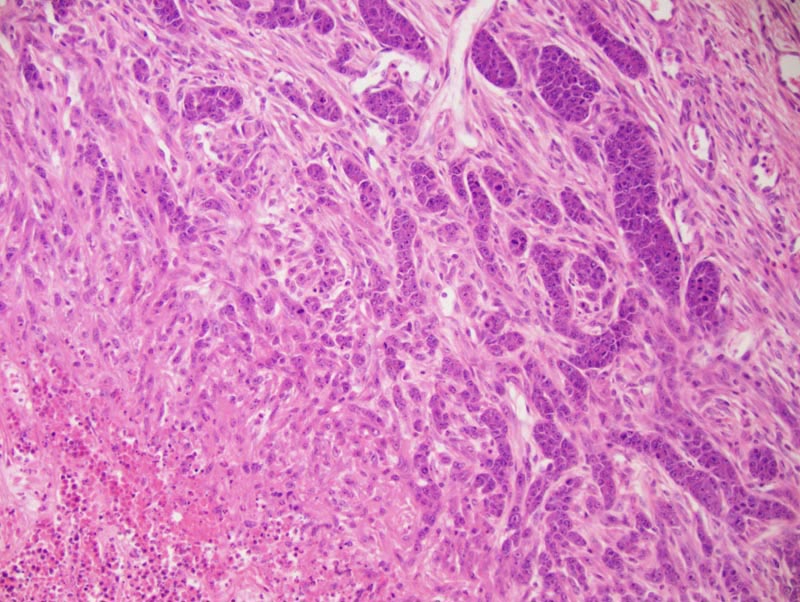Pathology Image Detail

Caption |
Area of epithelial to mesenchymal transition: in a few areas, especially at the vicinity of the large areas of coagulation necrosis located at the periphery of the neoplasm, neoplastic cells formed thin trabeculae and cords and gradually became spindloid. The stroma was more abundant and more fibrous in the areas of epithelial to mesenchymal transition than in the rest of the neoplasm. |
Description |
Adenocarcinoma, solid, comedo, with epithelial to mesenchymal transition, mammary gland |
Age at Necropsy |
285 days |
Contributor |
Churchill GA (J:112750) |
Pathologist |
Mikaelian I (J:94320) |
Method |
H&E |
Model |
|
Strain |
|